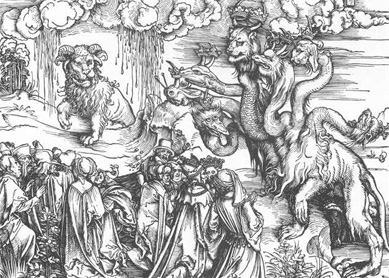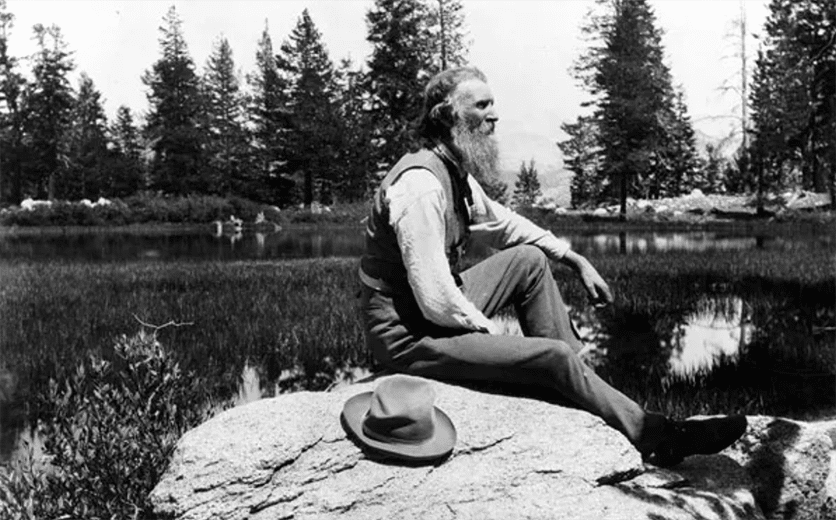Increasing alarm over global warming and other threats to the natural world has led many people to frame environmental changes in apocalyptic terms. The natural world as we know it is coming to an end! Such warnings use apocalyptic images drawn from biblical texts, but some writers have pushed back against such interpretations.
How does apocalyptic imagery influence modern perspectives about the climate?
Ancient apocalypses often predict an imminent end to the world. They point out cosmic signs that this end is coming, such as violent conflict, social upheaval, and supernatural abnormalities (like the darkened stars of Rev 8:12). Apocalyptic narratives also display a dualistic view, meaning they perceive clearly defined forces of good and evil and sometimes frame earthly disasters as manifestations of divine wrath against evil regimes of the time. Many apocalypses look beyond the looming crisis to envision a rebirth of a new utopian order (such as the coming of the Son of Man in Matt 24:30).
These apocalyptic elements have appeared in various modern environmentalist writings. Rachel Carson’s Silent Spring, for example, characterizes environmental disaster using apocalyptic dualism. She predicts that pollution will soon lead to an “evil spell” descending upon earthly communities, where environmental crises will bring about natural disasters “with great speed.” Similarly, the popular disaster thriller The Day After Tomorrow (2004) portrays abnormal weather events in an apocalypse-like scenario, where natural calamities such as hailstorms, cyclones, flooding, and snowstorms occur nearly simultaneously. Scholars of religion such as Martha Lee have also pointed out how EarthFirst!, a radical environmentalist group, framed its activism in terms of a dualistic apocalyptic battle against the evils of modern industrialism, which would result in the emergence of a new, utopian world order where humans and nature live in harmony.
How have thinkers pushed back against this influence?
Some scholars argue that apocalyptic language and themes in environmental media have negative effects. Sarah King, for example, worries that overreliance on apocalyptic literature may make readers expect imminent and obvious natural changes; in reality, the effects of climate change (e.g., rising sea levels, a change in average temperatures) may appear more gradually and, at least initially, be hard to notice. The disconnect between popular expectation and actual outcome, in turn, may inspire distrust in climate science. The doom and gloom of apocalyptic narratives, moreover, may prompt climate pessimism, blunting efforts to slow climate change. Conversely, Martha Lee argues that the good-versus-evil dualism found in some modern apocalyptic thought may inspire violent action.
Others have criticized modern nature apocalypses as wrongly implying that major natural destruction will occur only in the future. Critics like Wendell Berry argue that climate change is already affecting natural ecosystems through, for example, the extinction of species and alterations in ecosystems. Along similar lines, Kathryn Yusoff has noted that focusing on climate change on a global scale pushes out of view minority and other marginalized communities, who have already been devastated by apocalyptic-like environmental disasters. Using apocalyptic images to describe these kinds of crises downplays current climate changes that are already occurring and are ongoing.
These critiques have not dampened the popularity of nature apocalyptic narratives, which still feature in media and public conversation on climate change. Scholars such as Amy Patrick and Jonathan Moo, moreover, defend the usefulness of apocalyptic narratives because they emphasize the potential for drastic and enduring changes to natural ecosystems and their human inhabitants.
Whatever their value to environmental thought and practice, the use of apocalyptic themes in environmental narratives is a striking example of how biblical motifs endure in even apparently secular parts of contemporary society.
Bibliography
- Berry, Wendell. Our Only World. Counterpoint, 2015.
- Carson, Rachel. Silent Spring. Houghton Mifflin, 1962.
- King, Sarah J. “The End of the World as We Know It? Apocalypticism, Interdisciplinary, and the Study of Religion.” Journal of the American Academy of Religion 83 (2025): 422–31.
- Lee, Martha F. “Environmental Apocalypse: The Millennial Ideology of “Earth First!” Pages 119–37 in Millennium, Messiah, and Mayhem: Contemporary Apocalyptic Movements. Ed. Thomas Robbins and Susan J. Palmer. Routledge, 1997.
- Moo, Jonathan. “Climate Change and the Apocalyptic Imagination.” Zygon 50 (2015): 937–48.
- Patrick, Amy M. “Apocalyptic or Precautionary? Revisioning Texts in Environmental Literature.” Pages 141–53 in Coming into Contact: Exploration in Ecocritical Theory and Practices. University of Georgia Press, 2010.
- Sideris, Lisa. “On Letting a Thousand Flowers Bloom: Religious Scholarship in a Time of Crisis.” Journal of the American Academy of Religion 83 (2015): 356–72.
- Yusoff, Kathryn. A Billion Black Anthropocenes or None. University of Minnesota Press, 2018.





